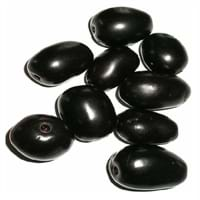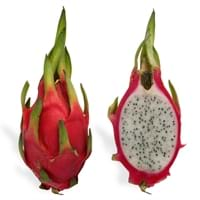Health Benefits
Cancer prevention, Heart care, Increase in haemoglobin, Regulates Blood Sugar, Ulcer prevention
Anti-oxidant properties, Anti-aging benefits, Maintains healthy cholesterol level, Weight loss properties
General Benefits
Boosts immune system, Digestive aid, Fights against infections, Strengthens bones
Helps in weight loss, Suppresses Arthritis
Skin Benefits
Brightens and lightens complexion, Skin cleansing, Skin rejuvenation, Treatment of acne, Treatment of dark spots
Anti-aging benefits, Heals sunburn, Treatment of acne
Hair Benefits
Promotes longer and healthier hair, Protects hair
Treatment of colored hair
Allergy Symptoms
Abdominal pains, NA
NA
Side Effects
Decrease in blood sugar levels, Allergic reaction, Throat irritation, Throat swelling, Possibly unsafe during pregnancy
NA
Lactating Women
Yes
Not Available
Best Time to Eat
As a snack in the late afternoon, Don't consume at night and before bed, Eat the fresh ones, avoid mixing with any other foods, don't eat after meal., Morning time (before lunch), Strictly avoid empty stomach
Any time except an hour after meal, Don't consume at night and before bed
Vitamin A (Retinol)
Not Available
Vitamin B6 (Pyridoxin)
Not Available
Vitamin C (Ascorbic Acid)
Phytosterol
Not Available
Calories in Fresh Fruit with Peel
Calories in Fresh Fruit without Peel
Not Available
Not Available
Calories in Frozen Form
Not Available
Not Available
Calories in Dried Form
Not Available
Not Available
Calories in Canned Form
Not Available
Not Available
Calories in Pie
Not Available
Type
Tree fruit, Tropical
Berry, Citrus, Fruit vegetable, Melon, Tree fruit, Tropical
Season
Monsoon, Summer
Early fall, Summer
Varieties
Ram Jarnun and Paras
Selenicereus megalanthus and Hylocereus polyrhizus
Color
Black, Magenta, Purple
Magenta, Pink
Inside Color
Purple
White
Taste
Astringent, Sweet
Bland
Origin
Bangladesh, India, Indonesia, Malaysia, Nepal, Pakistan, Philippines, Sri Lanka
Central America, Mexico
Soil Type
Loam, Sandy loam, Well-drained
NA
Climatic Conditions
Humid, Rainfall
NA
Facts about
- Wood of jambul tree is water-resistant wood & is used in railroads and to implement engines in the well.
- In Indian mythology, it is said that Jambul fruit was revered by Buddha.
- Jambul has a huge importance in Ayurveda.
NA
Other Countries
Bangladesh, Indonesia, Malaysia, Nepal, Pakistan, Philippines, Sri Lanka
NA
Top Importer
Not Available
China
Top Exporter
India
Vietnam
Botanical Name
Syzygium cumini
Hylocereus undatus
Synonym
Eugenia cumini
Pitaya, Red Pitahaya, Night blooming Cereus, Strawberry Pear, Belle of the Night, Conderella plant
Subkingdom
Tracheobionta
Tracheobionta
Division
Magnoliophyta
NA
Class
Magnoliopsida
Not Available
Subclass
Rosidae
Liliidae
Order
Myrtales
Caryophyllales
Family
Myrtaceae
Cactaceae
Genus
Syzygium
Hylocereus
Species
S. cumini
H. undatus
Generic Group
Not Available
Cactus
Compare Jambul and Dragonfruit
It is important compare Jambul and Dragonfruit as both the fruits have a different nutritional value. Their comparison can be done on the basis of their vitamin and mineral content, calories, benefits as well as characteristics, making it easier for us to choose the best fruit for our diet. Their general health benefits are as follows:
Jambul Benefits: boosts immune system, digestive aid, fights against infections and strengthens bones.
Dragonfruit Benefits: helps in weight loss and suppresses arthritis.
Fruits are also used as a remedy for various hair problems. The hair benefits of Jambul are: promotes longer and healthier hair and protects hair and hair benefits of Dragonfruit are: treatment of colored hair. Some fruits are known to cause allergic reactions. The allergy symptoms of first fruit are: abdominal pains and na and the symptoms of second fruit are: na. Get sorted Jambul vs Dragonfruit comparison with the help of fruit comparison tool by fruitvs.com.









